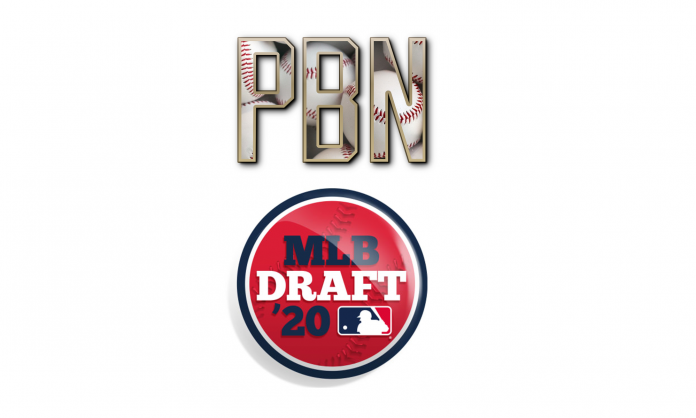We don’t have a set date for the 2020 MLB amateur draft yet, but we now know that it will be held between June 10th and July 20th, with fewer rounds and a signing deadline that will be no later than August 1st. We are going to continue the Draft Prospect Watch series as normal, even if the date gets pushed back to July 20th. Worst case scenario is that you know a lot about more draft picks than normal.
The Pittsburgh Pirates own the seventh overall pick in this draft, as well as the 31st and 44th overall picks. Their draft bonus pool for five rounds was announced recently. Each Saturday, we will take an in depth look at one prospect who could be a good fit for that seventh overall pick, as well as another who rates a little lower and fits better with those two lower picks. In case you missed it, here’s our draft preview article.
We have posted 12 Draft Prospect Watch articles so far, which are all linked here:
Nick Gonzales and Jordan Westburg
Asa Lacy, JT Ginn and Emerson Hancock
Garrett Mitchell and Freddy Zamora
Austin Wells and Patrick Bailey
Tyler Soderstrom and Drew Romo
Heston Kjerstad and Daniel Cabrera
Robert Hassell and Pete Crow-Armstrong
Today we look at something recent from Baseball America. Last week they had the Pirates selecting Max Meyer in their new mock draft. Meyer was profiled above and that link has more information. So what we will do today is look at the two closest players to the Pirates in that mock draft, who we haven’t covered here already. Those two players are prep right-handed pitcher Mick Abel and Louisville lefty Reid Detmers. MLB Pipeline just updated their top 150 draft prospects list and they have Detmers ranked #8 and Abel #11.
We start with Abel, who is 6’5″, 190 pounds and he turns 19 in mid-August. He’s from Oregon and has a commitment to Oregon State. He has a four-pitch mix, which you don’t see often from high school players. Abel has a 93-95 MPH fastball that he commands around the zone, throwing a two-seamer down and a four-seamer at the top of the zone. His velocity faded a little at the end of last year, but he should at least hold that velocity down the line when he fills out that frame, or possibly add more.
What gets Abel ranked so high is that he has two plus off-speed pitches. His slider sits 82-86 MPH according to MLB Pipeline, who calls the pitch “very effective”. BA notes that some scouts call his slider the best breaking ball in this year’s prep class. His changeup is even better, with late life and good separation. He also throws a curveball that is an average offering.
You’re talking about someone here who throws strikes, can work the zone, and he has three pitches at 18 years old that are above average already. He’s got a huge frame and he’s considered to be very athletic. BA notes a good point about him not getting a chance to pitch this spring and how it could hurt him. Scouts didn’t get a chance to see if they late drop in velocity was just a young pitcher wearing down, or if it was something to be concerned about. Abel could have improved his stock with better velocity this year.
Here’s video from Prospects Live from last summer
Here are some more recent highlights from MaxPreps
Reid Detmers was briefly covered here way back on February 19th when Baseball America picked him in an early mock draft for the Pirates. He’s 6’2″, 210 pounds and he turns 21 in July. Detmers is called the most polished left-handed pitcher in this draft class. He doesn’t have overpowering stuff, but he could move quickly through the system.
Detmers throws a low-90s fastball, sitting about 91-92 MPH. The velocity plays up because he hides the ball well. He mixes that with a low-70s curve that shows good arm speed and spin, and works as a strikeout pitch that is particularly tough on lefties. Detmers also has a changeup that shows good sink and BA calls it an above average pitch. He can also mix in a slider, though it appears to be an average fourth offering at this point.
Detmers has a high floor due to his command of three pitches, along with a durable frame, making him as safe as any pitcher in this draft class. The question will be how well does his velocity hold up against top level competition and whether or not the slow curve is effective against better hitters. He could throw the pitch harder, but the arm speed seems to make it a very hard pitch to pick up and he gets good spin. Those two things will ultimately decide if he’s a top 2-3 starter in your rotation or a back-end guy.
Here’s video from Prospect Live from last summer
Here’s the final pitch of every strikeout from a 15-strikeout game this year. This one has velocity for each pitch.



